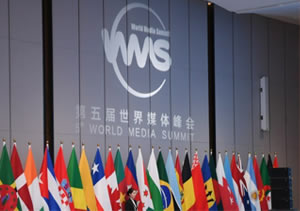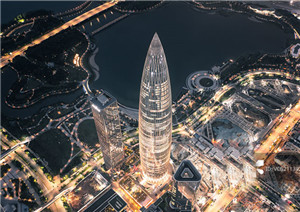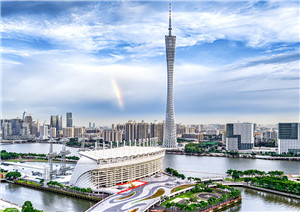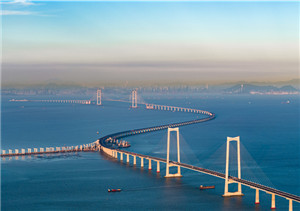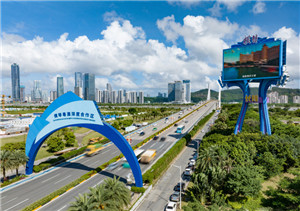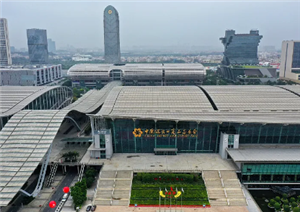
A bird's-eye view of the western artificial island on the Shenzhen-Zhongshan Link in August. SHI LEI/NANFANG DAILY
An artificial island on the Shenzhen-Zhongshan Link, a super cross-sea project in the Guangdong-Hong Kong-Macao Greater Bay Area, is set to begin a month-long trial operation as a cultural and tourism site on Nov 25, according to the project's operator.
The formal opening of the western artificial island is scheduled for December, according to Guangdong Transportation Group.
The Shenzhen-Zhongshan Link, a cross-sea cluster project that integrates bridges, islands, tunnels and underwater interchanges, spans approximately 24 kilometers, making it one of the most challenging projects of its kind in terms of comprehensive construction difficulty.
After seven years of planning and seven more years of construction, involving over 15,000 construction workers, the project was completed and opened to traffic on June 30, 2024.
Over the past year, an increased number of vehicles have traversed the bridge, submerging into the tunnel from the western island and emerging back onto the bridge from the tunnel.
As a crucial hub for the bridge-tunnel transition of the link, the western artificial island, covering an area of approximately 137,000 square meters, serves functions related to traffic management, emergency rescue and science education.
The cultural and tourism operation and development of the entire western artificial island will be carried out in phases, according to Chen Hailiang, operational director of Shenzhen Cultural Tourism Industry Development, a company in charge of the island's operation.
"The initial phase will primarily focus on study tours and sightseeing centered around the science and education base established on the artificial island," Chen said.
During the one-month trial operation period, reservations will be accepted for enterprises and study groups from Monday to Friday, with public reservations accepted on weekends, according to Chen.
"After successfully making a reservation, visitors can participate in the internal test, boarding buses at designated stations to arrive on the island," Chen said.
Through on-site experiences, visitors will be invited to provide feedback and suggestions regarding the tour routes at the science education base, the adaptation of virtual reality/augmented reality interactive equipment and the provision of supporting services.
The visitors recruited for the trial operation will participate free of charge. Once officially open, the ticket prices will be 188 yuan ($26.40) for adults, 158 yuan for students and 128 yuan for children, and will include round-trip transportation and an approximately three-hour-long tour of the island.
Preparations for dining and other facilities are underway, with an expected launch by the end of December.
"In addition to capturing views of iconic landmarks such as Shenzhen Bao'an International Airport and the Shenzhen-Zhongshan Bridge from the observation deck in the atrium of the island, visitors can deeply engage with the cross-sea link's science and education base," Chen said.
The base covers an area of about 2,200 square meters, allowing visitors to explore the development history of the cross-sea project, the bridge and underwater tunnel development in China, as well as the construction journey of the mega project.
Leveraging the technological aspects of the project itself, an exhibition hall inside the base features several digital experience scenarios, which integrate virtual reality, augmented reality and holographic projection into a technology and cultural tourism model.
"Outdoors on the western artificial island, there are also full-scale steel shell test sections of the underwater immersed tunnel and various engineering components on display, allowing visitors to understand the history of the construction of the project," Chen said.
While ensuring traffic operation management, the island will gradually expand into a comprehensive cultural and tourism site that integrates sightseeing, leisure and supporting services by utilizing areas such as the science and education base, the rescue dock and the helipad, according to Chen.
"In the long-term plan, the island will allow for activities such as viewing the bridge from the sea and low-altitude sightseeing flights, aiming to transform it into a technology, engineering and cultural tourism composite super IP in the Greater Bay Area," Chen said.



